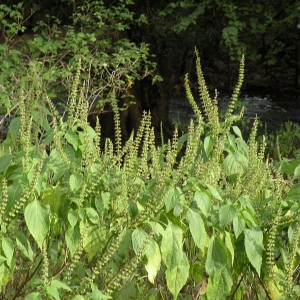Pesticidal effects of scent leaf (Ocimum gratissimum L.) on maize weevil: potency of scent leaf on Sitophilus zeamais

Accepted: April 25, 2023
All claims expressed in this article are solely those of the authors and do not necessarily represent those of their affiliated organizations, or those of the publisher, the editors and the reviewers. Any product that may be evaluated in this article or claim that may be made by its manufacturer is not guaranteed or endorsed by the publisher.
Authors
Maize weevil is a major pest of stored maize grains in many regions of the world including Nigeria. A laboratory investigation was conducted to assess the potency of Ocimum gratissimum L. leaves for Sitophilus zeamais control. The O. gratissimum powder was used for ethanolic extract preparation by soaking 300 g of dry powdered plant material in 1.5 L of absolute ethanol for 24 hours at room temperature with continuous stirring for 10 minutes. The ethanolic extract tested for phytochemical constituents, including tannins, alkaloids, saponins, phenolic compounds, terpenoids, steroids, glycosides, and flavonoids, showed that they were all present except steroids. Exposure of adult S. zeamais to different concentrations of ethanolic extract generated significant cumulative mortality, and increased as the concentration increased; 35.5%, 64.4%, 95.5%, and 100% mortalities of S. zeamais were recorded at 30, 150, 250, and 750 mg/mL extract, respectively. The capacity of the extract to induce 100% mortality at 750 mg/mL concentration revealed its potential as an insecticidal agent. The powder caused low weight loss and seed damage of grains treated with the highest dosage. The ethanolic extract of O. gratissimum displayed a high level of insecticidal activity against maize weevil suggesting a high possibility of using it as toxicant, repellent, and feeding deterrent in integrated pest management strategies of S. zeamais.
How to Cite

This work is licensed under a Creative Commons Attribution-NonCommercial 4.0 International License.
PAGEPress has chosen to apply the Creative Commons Attribution NonCommercial 4.0 International License (CC BY-NC 4.0) to all manuscripts to be published.

 https://doi.org/10.4081/jbr.2023.11246
https://doi.org/10.4081/jbr.2023.11246



